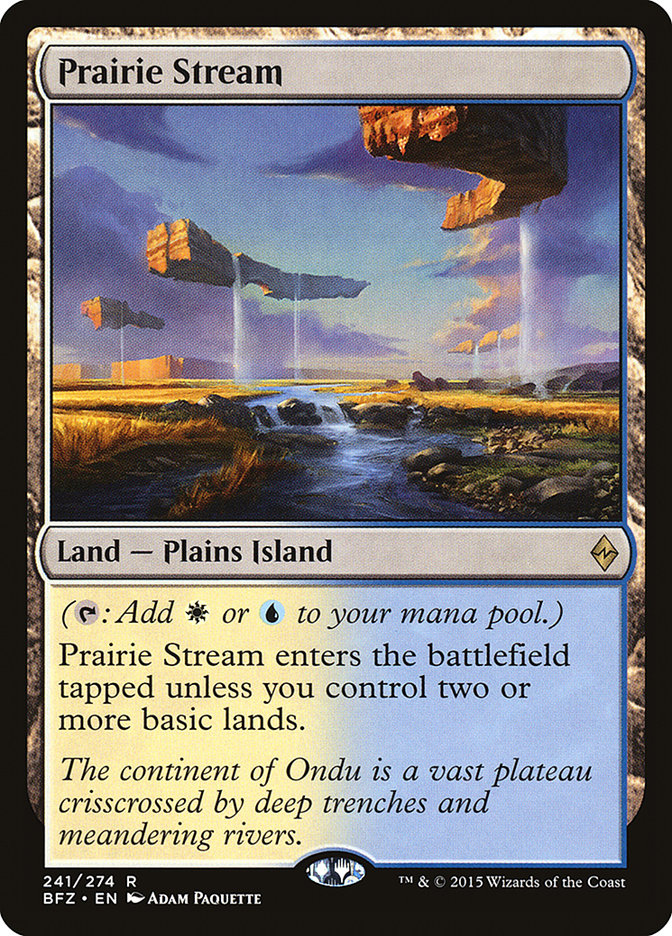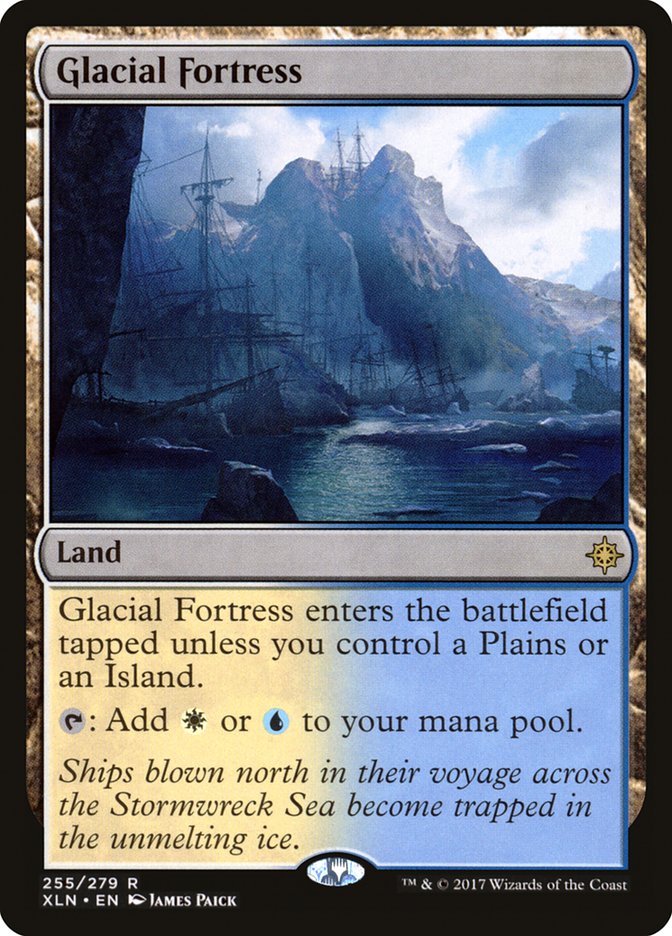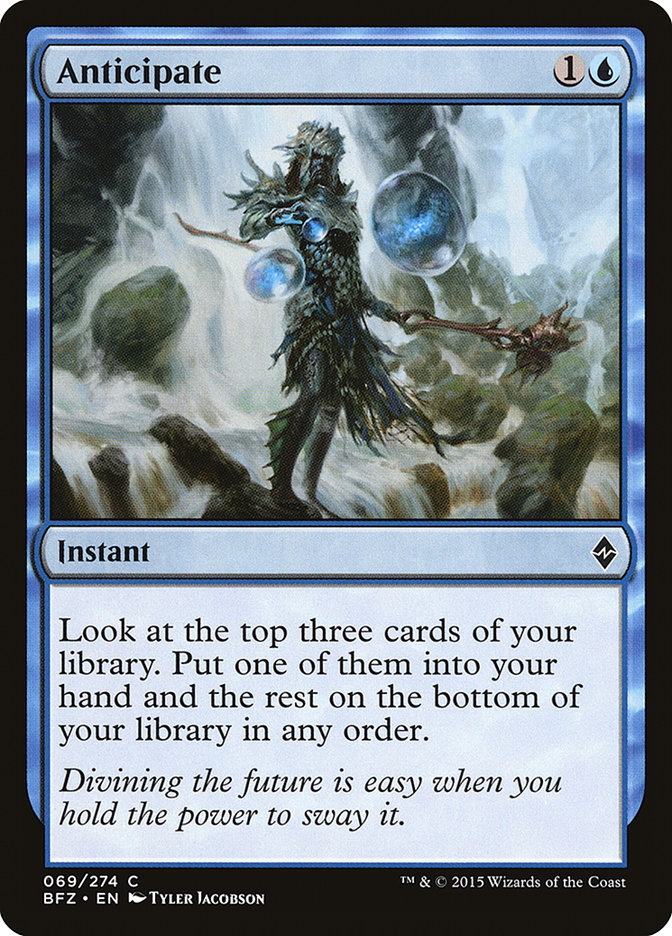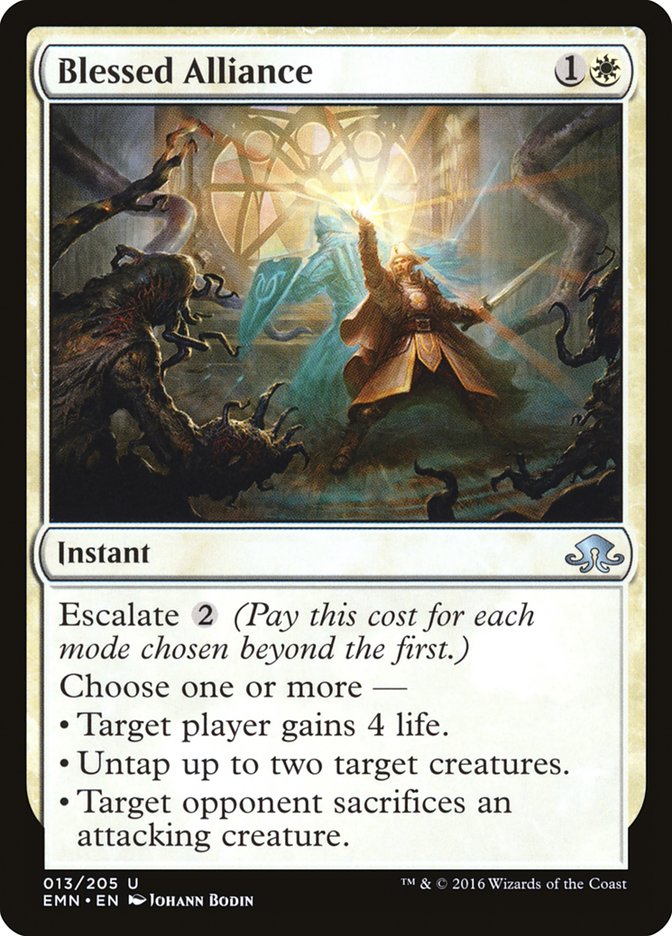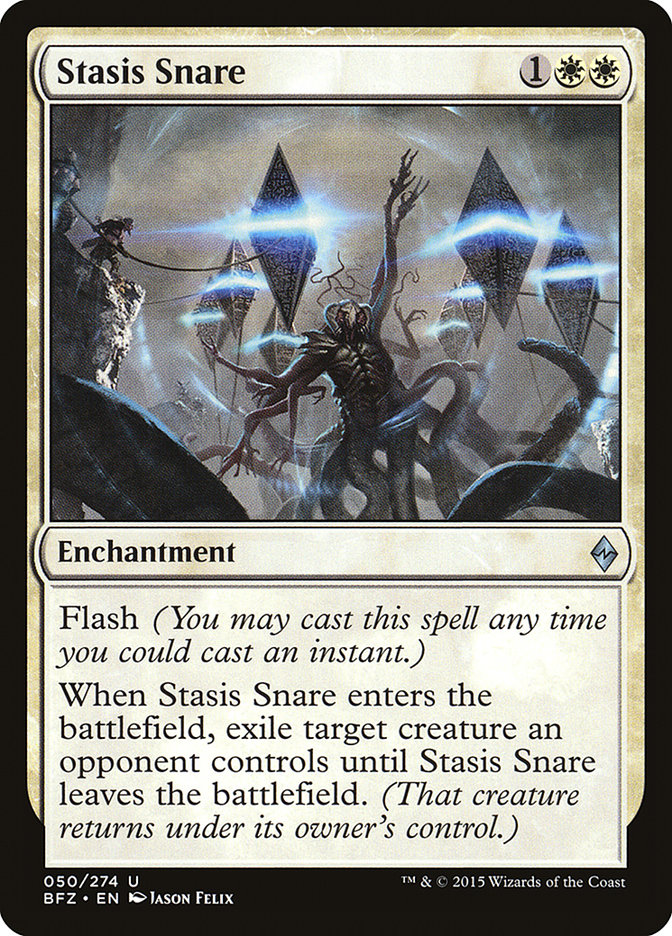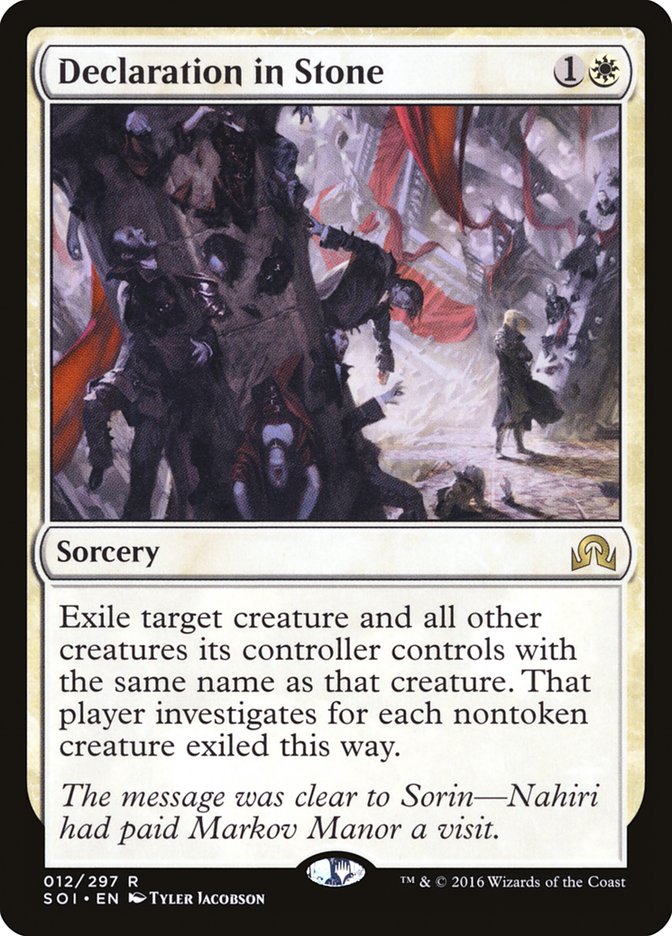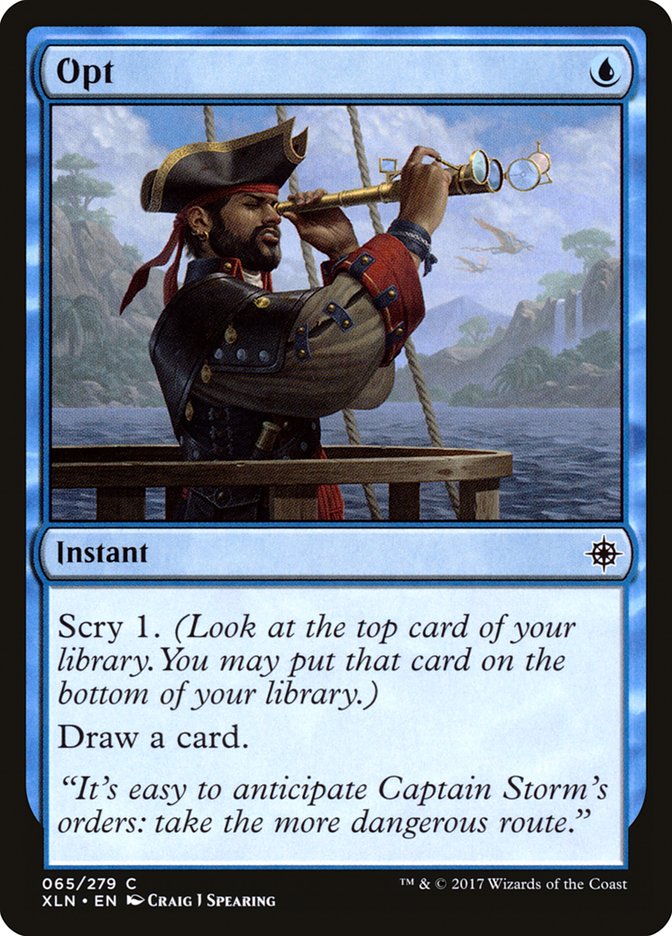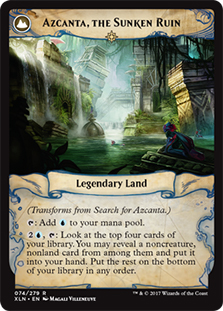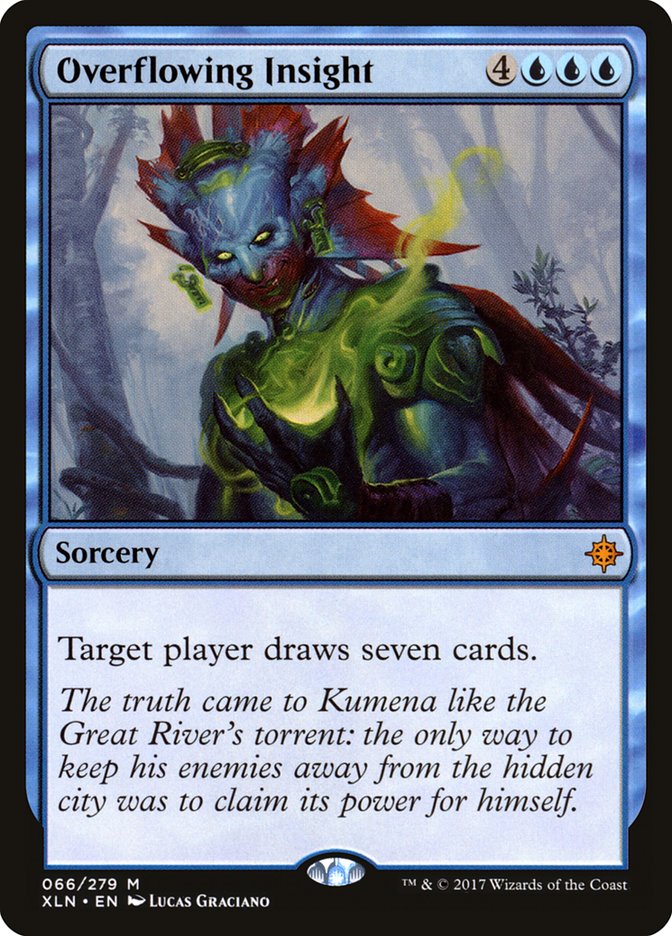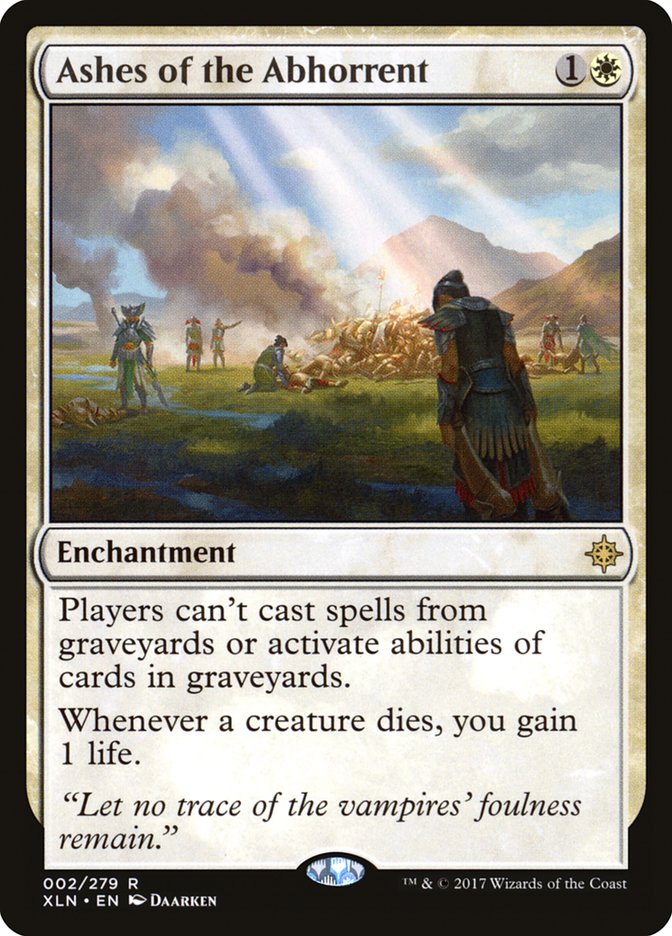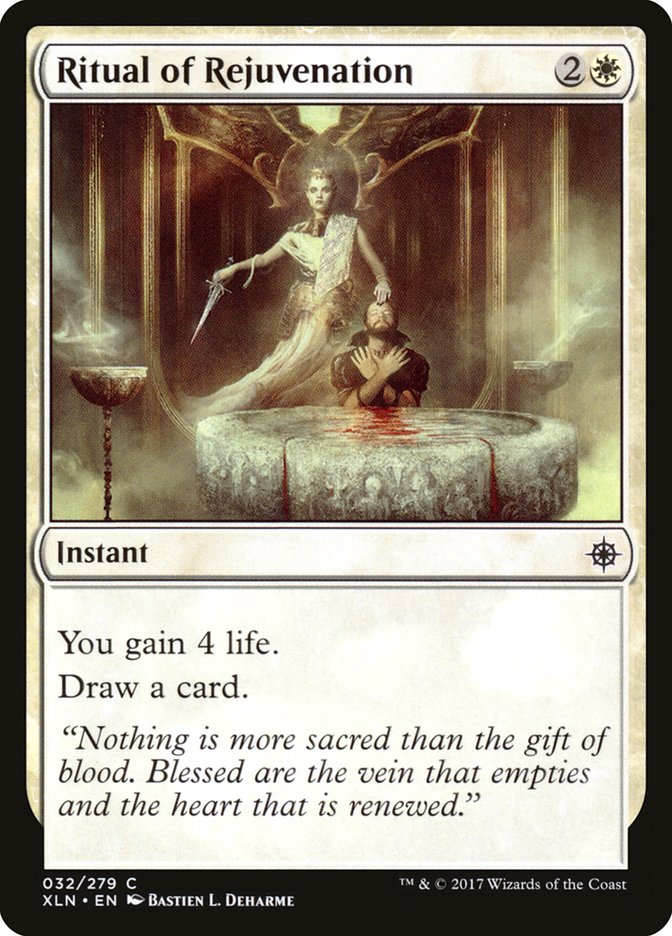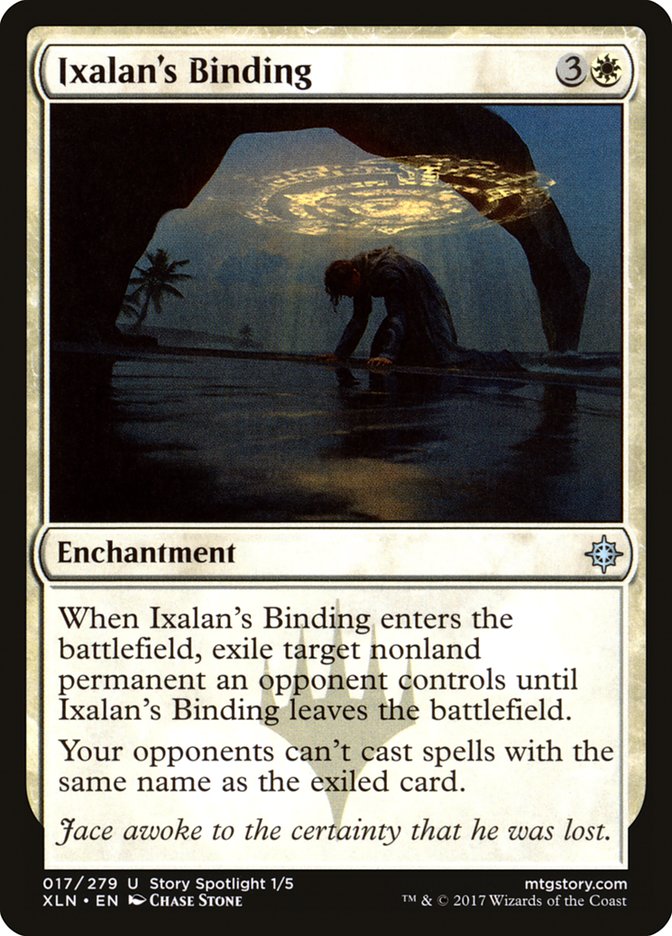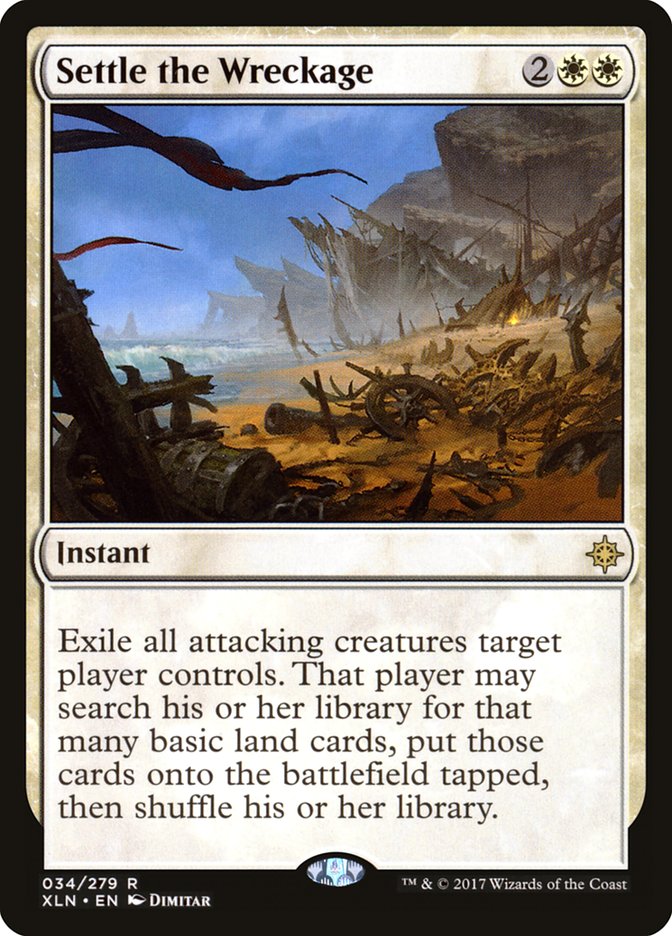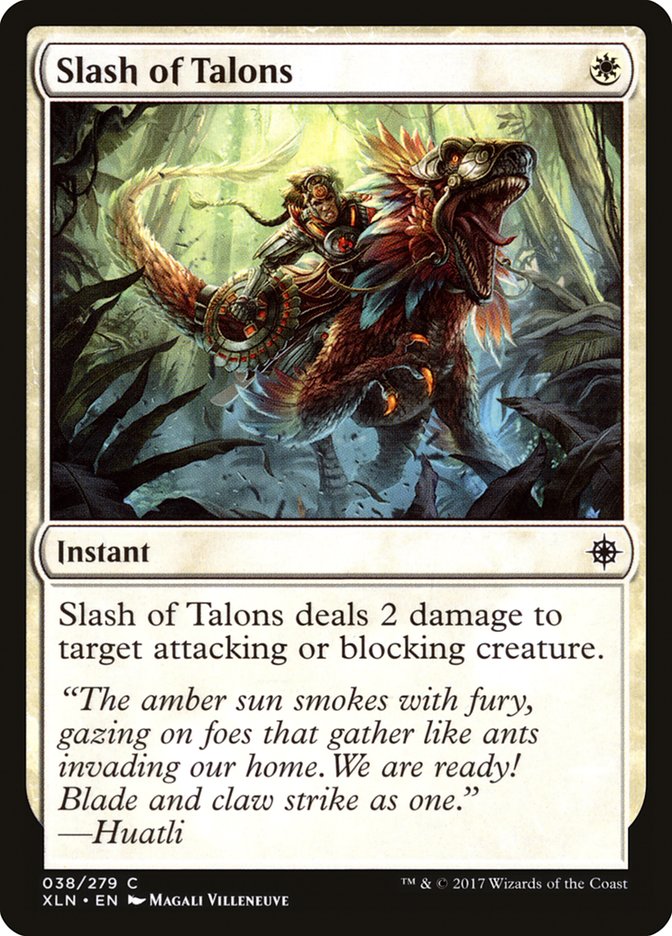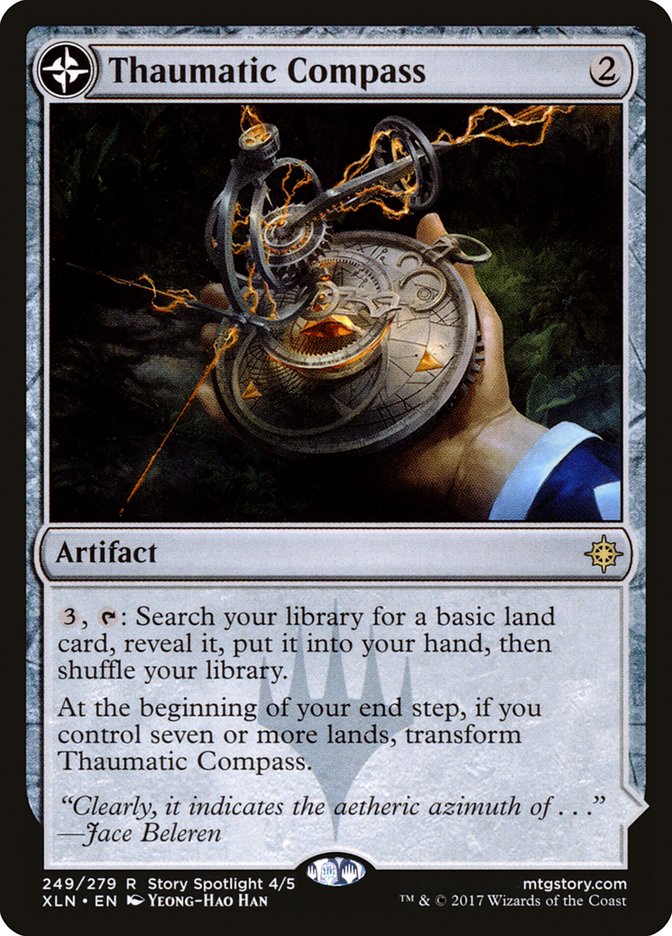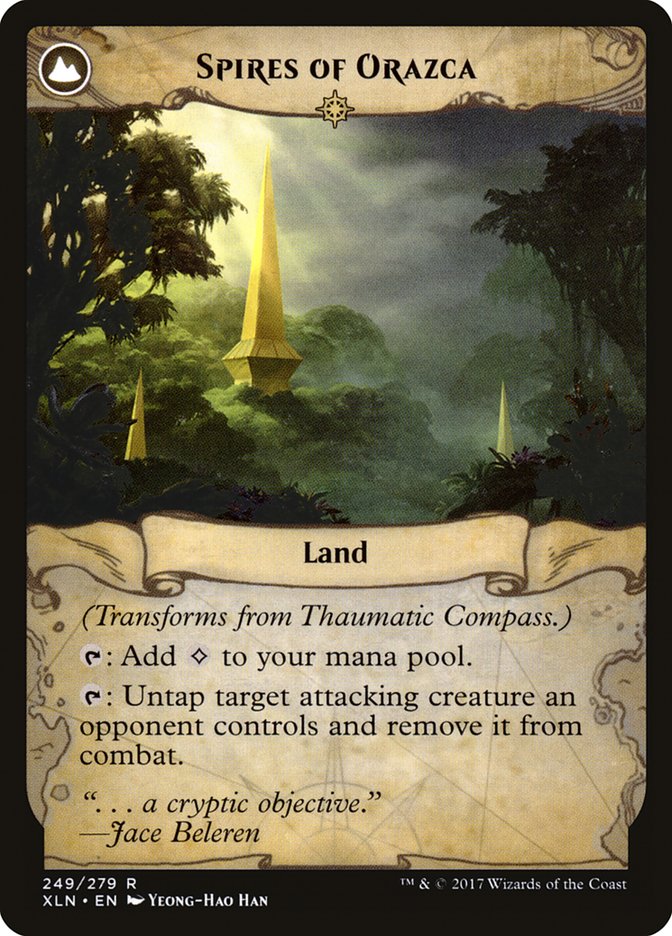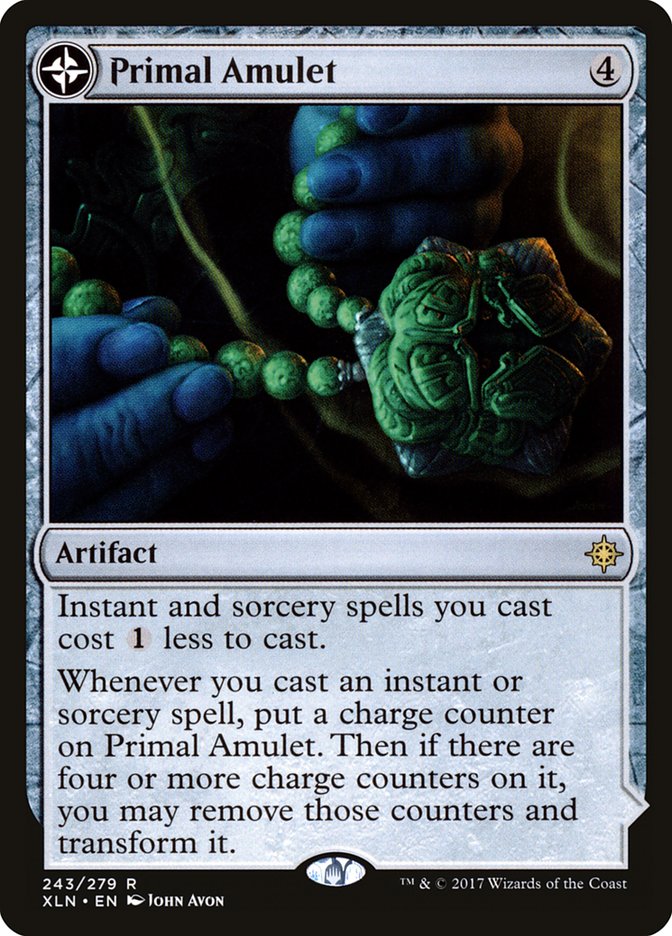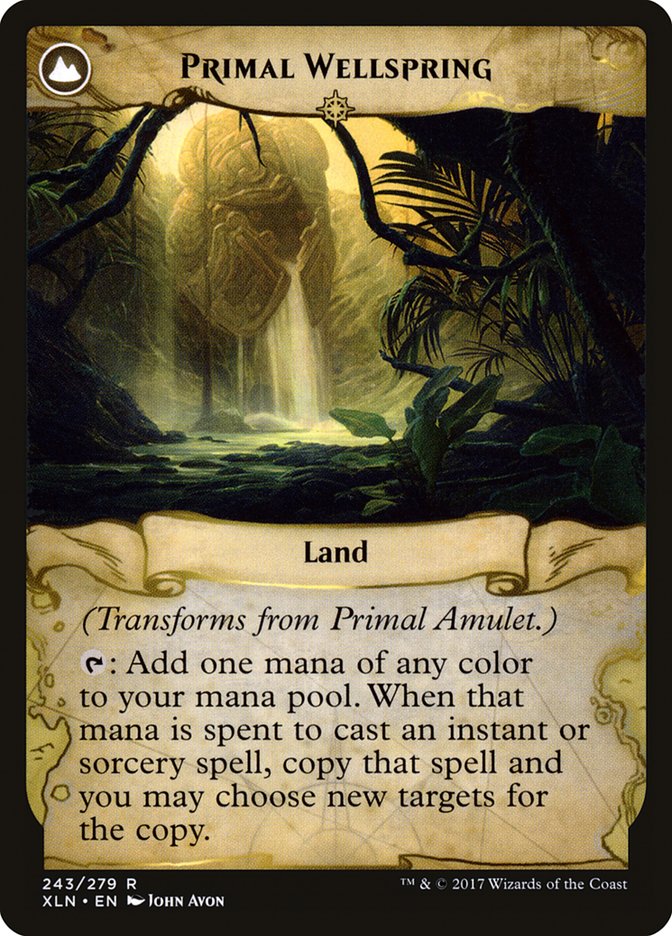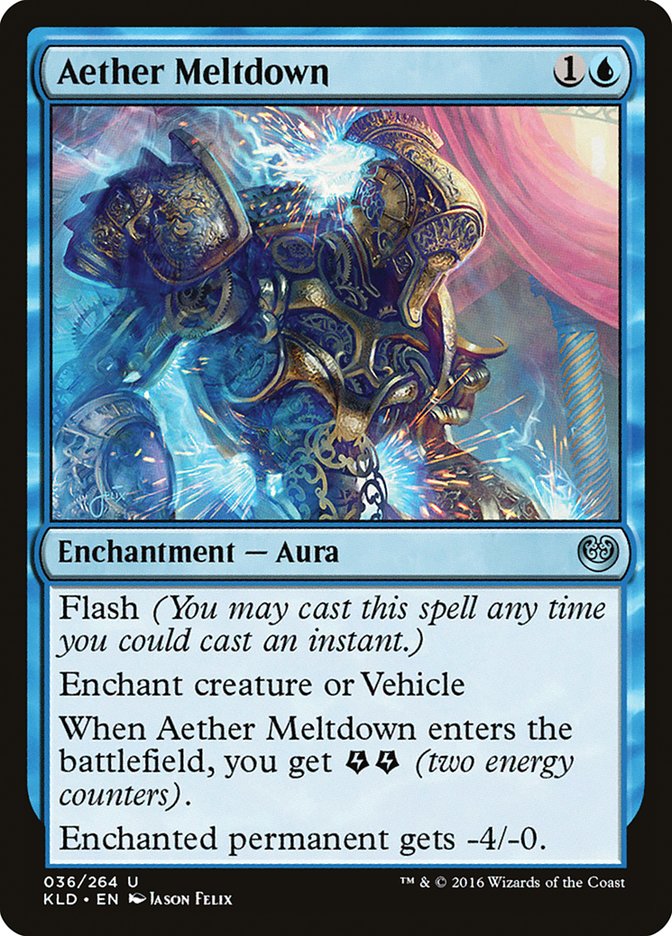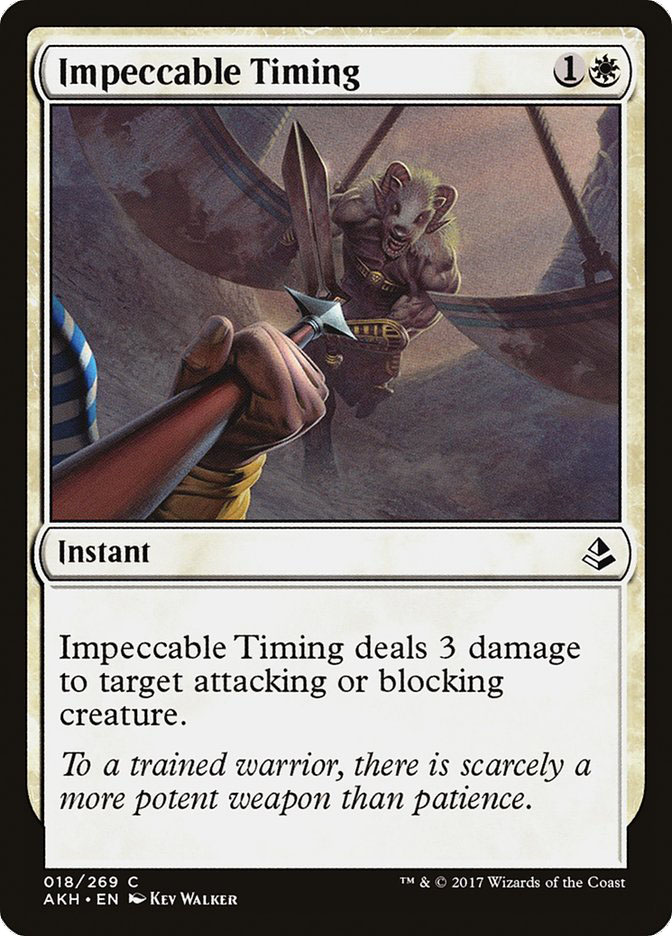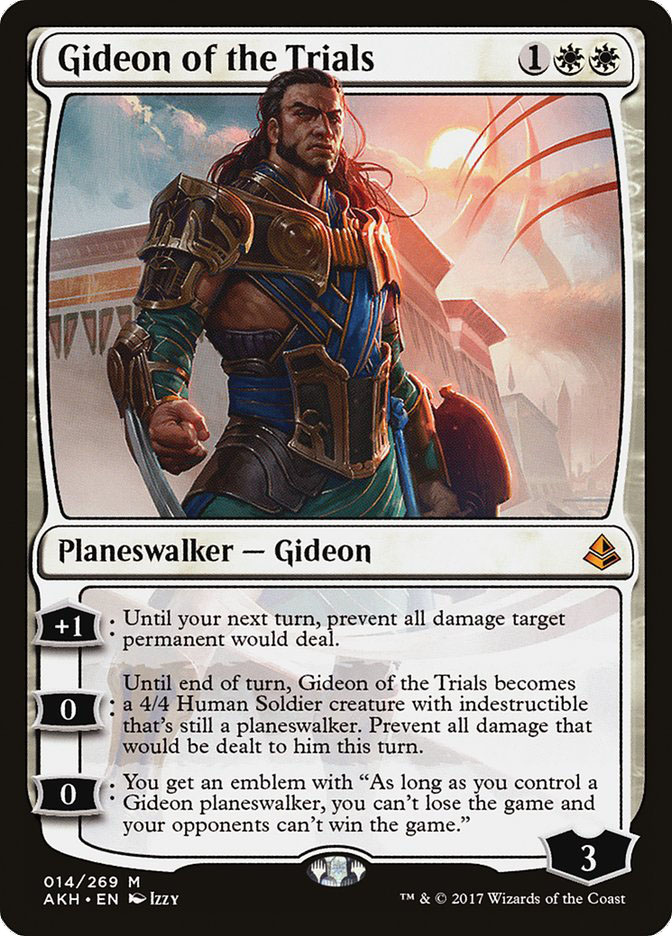Ixalan is the most excited for a set that I’ve been for a long time, and I can’t wait to start playing with Dinosaurs and Pirates in Standard. These tribal strategies aren’t for everyone, though, as there are still a few extremely good decks left from the last Standard season that will be the foundation of the metagame for #SCGDFW.
One of those decks is U/W Approach, the deck that I played at #GPDC at the beginning of the month. I may not really be known as a control player per se, but U/W Approach was my go-to deck last Standard season, and today I’m going to update my decklist for those of you looking to play it at #SCGDFW. First of all, let’s take a look at the list that I played at #GPDC and see what will be rotating out of the deck.
Lands (25)
Spells (35)

The majority of the deck, including most importantly our win condition, will survive rotation and be available for Ixalan Standard, but let’s take a look at the few cards that will need to be replaced.
As you can see, I really valued my lands entering the battlefield untapped and played a whopping seventeen basic lands to help facilitate that. I never wanted to have to play a tapped land in the late-game against Ramunap Red and wanted my manabase to be as smooth as possible because of that matchup, so I didn’t play Port Town or any colorless lands such as Westvale Abbey. I was very happy with my manabase before and thought that strategy worked very well in the deck, and the only land that is rotating out now is Prairie Stream. Thankfully Glacial Fortress is entering the format, which is actually just a strict upgrade for us. No longer do you need two basic lands on the battlefield for your Prairie Stream to enter the battlefield untapped, all you need is any other land in the deck on the battlefield and voila, untapped Glacial Fortress.
Anticipate was a card that I actually loved in the deck but most other people didn’t play. I always wanted to be doing something on turn 2, whether it was using a Blessed Alliance as removal on the draw or casting Censor as a counterspell on the play. People frequently would play around Censor if possible throughout a game, and I always loved having Anticipate as a card to cast at their end step to use that two mana. It allowed me to more often find a Glimmer of Genius for turn 4 and a Fumigate for turn 5, which was the curve I frequently wanted. Also, Anticipate was a cheap way to filter through cards to find your second Approach of the Second Sun after casting the first.
All three of the early-game removal spells that I used are rotating out, and that’s going to be the biggest hit to the deck. Losing Blessed Alliance is the worst hit by far; it was the best removal spell for a turn 2 Longtusk Cub early on, or a Hazoret the Fervent or Glorybringer in the late-game. Versatile two-mana removal spells are very hard to come by, and Blessed Alliance will surely be missed.
I also had three copies of Stasis Snare and a Declaration in Stone in my maindeck, which was more removal than many people played in U/W Approach, but I wanted to make sure to be able to beat Hazoret the Fervent among other cards. With a large portion of the Standard metagame revolving around creature decks, I wanted an extremely high win percentage against them Game 1 between overloading on removal and blanking their removal spells. This will likely be a good strategy for #SCGDFW as well with the introduction of a tribal block, but we’re going to need to find new removal spells to replace these rotating ones.
So we’re losing some key cards, but not a lot overall. Let’s take a look at what’s entering the metagame from Ixalan that could find a home in U/W Approach.
Let’s start with the easy one. Opt will be a nice replacement for Anticipate. Even though you don’t get to see as many cards as Anticipate, having half of the mana cost is a very nice. Overall this will most likely be an upgrade to the deck, and a very easy swap.
Search for Azcanta basically goes in the same slot as Opt does and the trade-off is speed for power. Search for Azcanta is a very slow card, but over time the two-mana investment can yield amazing dividends. This is the kind of card that won’t help in your worst matchup, Ramunap Red, but over a long game it can be incredibly powerful. For now I would only want to put one in the maindeck because of the weakness to Ramunap Red and the fact that it’s legendary, but I could see it overperforming enough to have another copy or two in the sideboard. It’s worth noting that the transform clause is a “may,” so that if you already have an Azcanta, the Sunken Ruin on the battlefield, you can leave the second copy on the Search for Azcanta side.
Everyone loves drawing extra cards, right? So how about seven cards for seven mana?
Overflowing Insight is being overlooked some, if you ask me, as the rate is extremely high. Compare it to Pull from Tomorrow, which draws five cards and then you discard one, and getting an entire new starting hand for seven mana is a bargain. The downside of Overflowing Insight is flexibility, as you can’t cast it early in the game if you need to. I don’t think I’d have the card in U/W Approach for #SCGDFW right away, but it’s a card I’m going to keep in mind when seeing how the metagame shapes up.
Solid sideboard option, but not one that I think works for this deck. Spell Pierce is best in tempo decks that can capitalize on its low cost of one mana. When you have the slow clock that Approach of the Second Suns provides, your opponents have plenty of time to make their land drops in order to pay the extra two mana. I prefer hard counterspells like Negate here.
Ashes of the Abhorrent may find room in the sideboard, but I’m skeptical. I’d love it if the card could shut down God-Pharaoh’s Gift somehow, but unfortunately it doesn’t. There are still some important creatures in the format, such as Earthshaker Khenra, Champion of Wits, and Scrapheap Scrounger among others, that this enchantment can deal with, but it looks to be too narrow right now. Anything that says “gain life” is worth looking at in the current format where you need to be able to beat Ramunap Red.
Speaking of gaining life, Inspiring Cleric and Ritual of Rejuvenation do a fine job of that. Out of the two of these, I’m more interested in Inspiring Cleric, as I think a 3/2 body that can block is more valuable than drawing a card against the aggressive decks where you want to gain life. Also, there’s a good chance that Renewed Faith would be the superior card to Ritual of Rejuvenation due to the flexibility.
Here we have a quality removal spell, something we are desperately in the market for, but the cost is most likely too high at four mana. We already have access to four Cast Out, which not only has flash but also has cycling, and playing more four-mana one-for-one removal than that is probably out of the question. In order to play Ixalan’s Binding, the second clause in the card has to be very relevant, and if that’s the case, then this might see play, but that would be the only way.
If we’re going through the trouble of playing more four-mana removal, something that can exile multiple creatures is exactly what I want. Affectionately known as “Wrath to Exile,” Settle the Wreckage is an incredibly enticing card that we’re going to want to have access to. There is obviously the drawback of allowing your opponent to search for basic lands from their deck and put them onto the battlefield, but the ability to exile cards like Hazoret the Fervent and Earthshaker Khenra at the same time with one card is perfect. It’s possible that, against a deck like Temur Energy, when you cast the second Settle the Wreckage against them, they won’t have any more basic lands in their deck to find between the first one and their Attune with Aethers, and therefore the downside of the card is lessened with each copy you cast.
We’re still desperately in the market for early interaction, but Slash of Talons isn’t good enough for the maindeck. We can’t afford to play removal that won’t be able to kill a Winding Constrictor or Longtusk Cub, and so we’re going to have to look elsewhere. This could be a decent sideboard option if you want to be able to get rid of a pesky Bomat Courier on turn 1, but I don’t see this doing much outside of the Ramunap Red matchup. Maybe if smaller, tribal aggressive strategies emerge such as U/B Pirates, but for Week 1 I’m leaving this one alone.
Finally we have two artifacts where I really don’t know what to expect from either one, but they are both very exciting. Let’s start with Thaumatic Compass, which for two mana does, well, nothing until you have seven or more lands. Sure, you can pay three more mana to search your library for a basic land card to put in your hand, but I rarely see that opportunity coming up. Maybe if you leave up mana for Settle the Wreckage and they play around it, this could be a way to use that mana.
However, if you simply cast this in the late-game when you already have seven lands, it will transform immediately into Spires of Orazca, and having access to a Maze of Ith in Standard is simply incredible. Seven lands is not too much to ask in Standard, and this card reminds me a lot of Nissa, Vastwood Seer, which transformed frequently.
Primal Amulet is maybe more intriguing, but it asks you to spend four mana up front and also doesn’t have an immediate impact on the battlefield. Your next four instant or sorcery spells will cost one less mana, so you basically get that mana investment back over time, and then when you cast the fourth spell to transform Primal Amulet, the land you get is incredible. Primal Wellspring is a new mana source that copies one instant or sorcery you cast each turn, an incredibly powerful ability. I’m really excited to try out both of these cards in testing, but for now I don’t want to go overboard with recommending them for #SCGDFW.
So we have a baseline of where we were at last season and what cards are rotating in and out of the format, so what would the new decklist look like? Well, this is what I’d recommend for #SCGDFW next weekend:
Planeswalkers (3)
Lands (25)
Spells (32)
- 4 Opt
- 2 Authority of the Consuls
- 4 Fumigate
- 4 Glimmer of Genius
- 4 Cast Out
- 3 Approach of the Second Sun
- 4 Censor
- 3 Supreme Will
- 3 Settle the Wreckage
- 1 Search for Azcanta
Sideboard

As you can see, I haven’t changed much from the original list, mostly since I was very happy with the list before, but we’ve replaced a few of the cards that are leaving the format with some of the ones we talked about that are entering. The biggest hole in the deck is two-mana removal, as there really isn’t one I’m interested in playing in the format right now.
These are probably the best remaining two-mana removal spells, but I’m simply not too interested in playing either card due to their weak power level. Both spells are unreliable in the face of cards like Winding Constrictor and Longtusk Cub that can get very big very quickly, so instead I’m going with playing three copies of Settle the Wreckage to help catch up when behind. We’ll start off slowly, but hopefully the seven sweeper effects can catch us back up in a big way.
I like the power level of Gideon of the Trials as well, and think it has a nice home in U/W Approach. One card I’m particularly worried about when playing Gideon of the Trials is Glorybringer, but hopefully we have enough to keep the pesky Dragon at bay. Not only do we now have Settle the Wreckage, which can exile the Glorybringer and all other attackers at instant speed, but also the two maindeck Authority of the Consuls assure our Gideon that he won’t take any surprise hits. Gideon of the Trials, especially when paired with Authority of the Consuls, forces our opponents to put more threats on the battlefield, and then our seven sweeper effects can be used for maximum value.
Losing Blessed Alliance sure hurt U/W Approach, but I’m extremely excited about being able to play Opt and especially Settle the Wreckage in the deck. It’s possible that Settle the Wreckage may end up being worth four slots instead of Fumigate, as there are plenty of good creatures to exile right now. Unfortunately, I won’t be able to be at #SCGDFW next weekend, but if I were, I would likely play U/W Approach again, as I think it’s well-positioned against the variety of midrange decks you’re bound to play against Week 1.


